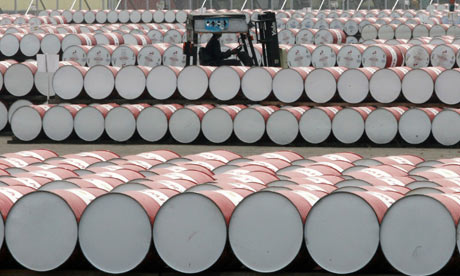The Institute of International Finance (IIF) expects that the Brent crude, the global oil benchmark, to average $65 per barrel ($65/b) in 2019 and $62/b in 2020. Brent crude oil prices averaged $65.5/b so far this year.
“We see global liquid fuels inventories rising by 0.15m barrels per day (bpd) in 2019 and 0.25m bpd in 2020. The lower forecast for inventory builds reflects lower expected crude oil production in OPEC+, in light of the July agreement between the 14 members of OPEC and a group of 10 major non-OPEC producers led by Russia to extend the oil production cut agreement through March 2020,” the IIF explained.
It is common practice among oil price forecasters to avoid modeling crisis entirely since the timing, likelihood, and potential impact of political and economic crises on supply and demand for oil are difficult or even impossible to quantify.
Rather, given the shortcomings of using econometric or statistical techniques, most institutions, including the IMF, the World Bank, and the EIA, simply rely on futures markets’ forecast prices, which are highly volatile. In contrast, the IIF bring together futures prices, it`s judgment of political and economic prospects (particularly crude oil supply by OPEC), and simple regression techniques to estimate global demand for oil. As of 7 August, oil futures contracts indicated that Brent prices will average $61.6/b in 2019 and $56/b in 2020.
The IIF mentioned that the US shale industry is facing the challenge of maintaining output growth amid cuts in capital expenditure, noting that the surge in production in the past three years has led to rising costs, as drillers are constrained by the equipment to address emerging bottlenecks in the industry.
“We expect growth in US crude oil production to decelerate from 1.6m bpd in 2018 to 1.3m bpd in 2019 and 0.9m bpd in 2020,” the IIF forecasts.
“We see OPEC’s crude oil production declining by 2.1m bpd in 2019, due to strong compliance with the OPEC+ supply cuts and sharp declines in Venezuela and Iran in the context of US sanctions. In 2020, OPEC’s production may flatten,” the IIF mentioned.
“Saudi Arabia has cut its production to slightly less than 10m bpd in recent months, from a peak of 10.6m bpd in October 2018. We expect Saudi oil production to decline from 10.33m bpd in 2018 to 9.95m bpd in 2019, and to remain flat in 2020. Iraq’s compliance with the OPEC+ agreement remains weak. Libya’s production may decline amid ongoing civil conflict,” it stated.
“OPEC’s crude oil production may increase in 2020, if Venezuela undergoes regime change, and if Iran and the US agree to renegotiate the nuclear deal,” the IIF added.
Concerning the non-OPEC countries, the IIF said that the growth in crude oil production in other non-OPEC countries is likely to accelerate in 2020.
“Output from offshore projects in Brazil and Norway, and easing of production curtailment policies in Canada, could produce an additional several hundred thousand barrels a day of crude oil in 2020. As a result, non-OPEC supply (including the US) is likely to increase by1.6m bpd in 2019 and 1.8m bpd in 2020,” the IIF pointed out.




